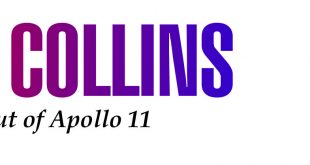Lahore, the second largest city of Pakistan and the capital of Punjab, has been facing severe traffic problems for a very long time. In these circumstances, it has become indispensable to make real improvements in the quality and services of the public traffic system.
In the first phase, the Punjab Government has started work on the mega project of Metro Bus System from Gajumata to Shahdara. Metro Bus System, which is the biggest development project in the history of Lahore, is now, rapidly passing through the various stages of its completion. After its completion, this project is likely to give a pleasant change to the city.
Upon the completion of project, eighteen thousand passengers would be able to travel by means of these big buses every hour. A state of the art fleet of 115 air-conditioned environment-friendly buses would become a part of Pakistan’s first most sophisticated transport system. Besides the construction of stations on each kilometre of the main carriage way and building of 32 overhead bridges to enable the passengers to reach there on foot, are also some of the important features of this project. On the terminals of these stations, the passengers will enjoy all facilities, including the modern ticketing system. After every two minutes, next bus will be available on the terminal.
The Metro Bus track includes South Asia’s longest flyover, extending over 9.6 kilometres is also being constructed to save the metro bus system from traffic problems. This system will also play an important role in reducing the traffic load, noise and air pollution on the small and link roads adjacent to the main Ferozpur Road. In addition to the building of the main track on the Ferozpur Road, an underpass will also be constructed for the benefit of those who cross the road on foot at Kalma Chowk. Moreover, the project has got an additional underpass for the traffic taking turn from the Model Town Morr. The special track for the metro bus system is nine to ten meters wide, consisting of two lanes 3.5 meters wide and a flexible strip one meter wide. It is separated from the general traffic by means of a double barrier, 1.7 meters high and 7 meters wide. According to Aashto, which is the authentic standard for highways, the width of the outer shoulders of the two 3.5-meter wide lanes is 40 centimetres. During the work on this project, the already existing general roads are also being repaired and improved. The designed speed for general traffic on Ferozpur Road will be 60 kilometres an hour, while each carriage will have three lines, and the minimum width of lanes will be 3 to 3.3 meters. Besides this, the condition of Ferozpur Road will be further improved by an additional layer of 5 centimetres thick asphalt.
The Gajumata to Yuhanabad 2.3 kilometre section is being constructed at the ground level. Construction work is already going on the ten kilometre long route from Yuhanabad to Kalma Chowk. It also includes the extension of Kot Lakhpat Bridge from one side. Besides the metro transport, general traffic will also be taken towards Kalma Chowk by this new 11 kilometre long bridge. It also includes the cost of the construction of the nine metre wide external route for the traffic heading for the left towards Peco Road. The estimated cost of the remaining ten kilometre long corridor from Yuhanabad to Kalma Chowk is more than 4 billion rupees. The five kilometre long metro bus route from Kalma Chowk to Qartba Chowk has been divided into two sections. The 2.8 kilometre section from Kalma Chowk to Rahmanpura is at ground level, while 2.2 kilometre section from Rahmanpura to Qartba Chowk will be at an elevated level. This elevated section consisting of two lanes will be lifted on pillars. The general width of the deck will be ten meters, whereas at the stations, it will be fifteen meters. The combined estimated cost of both these sections is around 4.75 billion rupees.
 Jahangir's World Times First Comprehensive Magazine for students/teachers of competitive exams and general readers as well.
Jahangir's World Times First Comprehensive Magazine for students/teachers of competitive exams and general readers as well.


